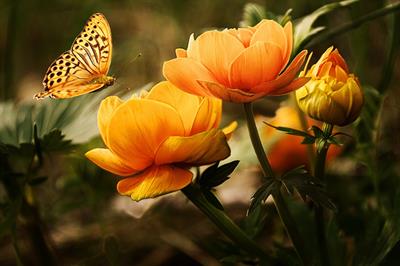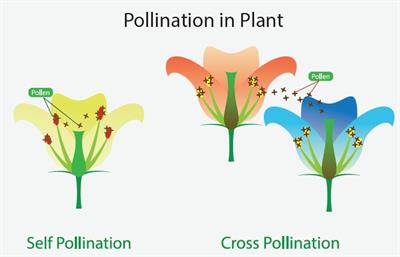
PUMPA - SMART LEARNING
எங்கள் ஆசிரியர்களுடன் 1-ஆன்-1 ஆலோசனை நேரத்தைப் பெறுங்கள். டாப்பர் ஆவதற்கு நாங்கள் பயிற்சி அளிப்போம்
Book Free DemoThe reproduction in plants starts with pollination.
Pollination is a process in which the pollen grains reach the stigma of a plant.
There is a variety of ways pollination happens. The following are the major types of pollination:
- Artificial pollination - Transfer of pollen grains manually from a male flower to the female flower. This may happen either in the field or in the laboratory.
- Natural pollination - Happens naturally through the agents of pollination such as wind, water, insects, birds, etc.

There are two types of natural pollination methods, such as:
- Self pollination
- Cross pollination

Self pollination - transfer of pollens from the stamen to the pistil of the same flower through the agents of pollination. Happens mostly in bisexual flowers. Self pollinating flowers do not produce more pollens as the stigma is very near to it. The new plant produced through self pollination may not show difference in characteristics.
Example:
Beans, paddy and tomato
Cross pollination - transfer of pollens from the stamen of another flower to the pistil of another flower through the agents of pollination. Happens mostly on unisexual flowers. Male flowers produced more pollens so that it reaches the female flower which may not be in its vicinity. The new plant produced through cross pollination have characteristics of both the plants.
Example:
Apple, pumpkin, grasses
Pollinators are the agents of pollination such as wind, insects, butterflies and birds are called pollinators.